
Internet services with competing DSL and cable speeds can be tough to sort through. Both options exceed many other types of connections, but how can you compare one to the other? It's important to know if you want to ensure the best possible speeds for your connection.
In this article, we're going to provide some tips on getting maximized speed and performance from your internet connection. We'll also take a look into the differences you may find between the DSL and cable internet services. That way, you can decide which will give you the best possible performance.
As a Concept, Cable Is Faster
Generally speaking, Cable modem internet services claim to be able to reach speeds of up to 300Mbps. On the other hand, DSL internet services may only reach bandwidth speeds of 100Mbps. What that means is that on paper, cable internet is able to offer more bandwidth. As a result, you'll be able to get more raw speed.
Meanwhile, DSL is said to provide lower levels of bandwidth, which can reduce the overall speed. This difference is largely due to the equipment used for reaching the internet. Cable technology is more suited to reaching those higher bandwidth numbers, while many forms of DSL equipment just can't get to the same levels.
However, in reality there are a number of reasons in the forms of both business and technical issues that can bring down that speed advantage that cable often has. It's important to keep these things in mind when searching for the option that can help you run faster.
What About The Specs In Reality?
There are a few things to consider when taking a look at the kind of speed offered by DSL and Cable internet providers in reality. For example, both of these providers can make use of speed caps, which place a limit on the kind of bandwidth you can get from that particular provider.
The number of people connecting to your home network can also effect the kind of performance you can achieve. If there is too much traffic, the internet connection can slow down. This applies to both DSL and cable modem performance.
Depending on your unique situation, the speeds available for cable modem services can be brought down much closer to those you'd expect from DSL. However, there is still more to take into consideration when you are choosing between the two options. It's a good idea to have an understanding of what speed caps are and how they can effect your services.
Considering Speed Caps
What Is a Speed Cap?
In short, internet providers can make use of both speed and bandwidth caps. Both of these place limits on the overall abilities of your internet. One places a limit on the maximum speed you can reach, and the other sets a limit on the bandwidth you can use on a monthly basis.
Depending on the provider and package you choose, you may have more or less wiggle room with regard to both of these aspects. Make sure you check with your provider to find out about any speed or bandwidth caps that may exist for you. If you're shopping for a new provider, make sure to compare these caps carefully.
Why Are They Imposed?
One of the most popular reasons for providers to place these caps is so that they can hold more customers. If everyone was given unlimited access, the provider may not be able to accommodate higher numbers of people as well.
They may also want to create access that is more fair to all customers. Different modems and other devices may otherwise be able to get much higher amounts of bandwidth, leaving customers with more average devices with less access overall.
A less favored reason may be because internet providers want to create different packages. This allows customers who want more bandwidth to pay more for a higher amount, while those who pay less get a lower amount. This can be helpful for those who don't use a lot of bandwidth and don't want to pay for too much more than they want to use.
Overall, providers may feel that most providers don't actually require that unlimited access. Most people have a certain range of bandwidth they use on a regular basis, and this can give them a good idea of what people tend to use rather than just allowing them to run wild when they likely wouldn't use the extra bandwidth anyway.
So, How Can You Improve Your Internet Speed?
Try a wired connection
Using a wired connection can improve the speed over a wireless one. Wires are better suited when you want to get the most possible speed that your modem and internet service provider has to offer. You can do this with en Ethernet cable, which is easy to obtain if you don't already have one.
This cable is going to connect from your router, to your computer or other device. You may notice a difference pretty quickly over the slower speeds of wireless connections. If you don't notice much of a change, don't worry! There are other things you can try.
Use fewer devices
Many households can have several different devices that are connecting to the internet at the same time. Things like tablets, computers, Roku TVs, Ps4s, Slingbox and Apple TV all make use of your internet, and therefore can have an impact on the available speeds. Even things like smart home devices and security cameras can end up sharing the connection.
In order to improve connection speeds, make sure to disconnect any devices you aren't using. That way, more of that speed can go toward the device you are using. This can help to improve the speeds of streaming, downloading and gaming for fewer interruptions. This can also help with avoiding reaching bandwidth limits as easily.
Upgrade or update your device
If you have a modem or router that is a few years old, it might be time for an upgrade. That old modem may very likely just not have the power to provide the fastest speeds possible. Upgrading one or both of those items to something with the most current specifications can make a huge difference in both your wired and wireless speed.
If your modem and router are newer, then it may be a matter of making sure they have been updated. Make sure to check your devices regularly to ensure they have up to date firmware. This can help with maintaining a faster connection speed.
Decrease the distance
The closer your device is to the router, the faster you'll find that your wireless speed is going to be. Because of that concept, it's best to have your router set up in a central point, or at a short distance from the devices you want to get the best speed from.
This can become more of a problem if you have a bigger home with a large family of people who want to connect their devices all over the house. In those situations, mesh router systems and range extenders can help to improve the signal further away from the main router.
Whether you use high-speed cable or DSL service, you probably don't want to pay higher prices for decent speeds. Luckily, for those growing increasingly more frustrated, there are plenty of tips to try so that you can keep using email, streaming movies and web surfing without the added cost. Using these tips, you'll be able to connect to your secure services with ease and more speed than you may be currently experiencing.
 The 10 Best Cable Modems for Cox of 2020
The 10 Best Cable Modems for Cox of 2020 The 8 Best Wireless Router Brands of 2020
The 8 Best Wireless Router Brands of 2020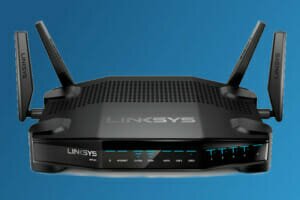 The 7 Best Linksys Routers of 2020
The 7 Best Linksys Routers of 2020 The 8 Best Wi-Fi Extenders of 2020
The 8 Best Wi-Fi Extenders of 2020 The 10 Best Wi-Fi Routers of 2020
The 10 Best Wi-Fi Routers of 2020 The 7 Best DD-WRT Routers of 2020
The 7 Best DD-WRT Routers of 2020 The 7 Best Netgear Routers To Buy In 2020
The 7 Best Netgear Routers To Buy In 2020 The 10 Best Wi-Fi USB Adapters of 2020
The 10 Best Wi-Fi USB Adapters of 2020 The 8 Best Gaming Routers of 2020
The 8 Best Gaming Routers of 2020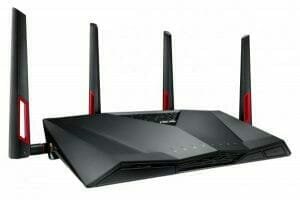 The 8 Best 802.11ac WiFi Wireless Routers of 2020
The 8 Best 802.11ac WiFi Wireless Routers of 2020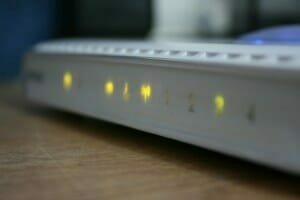 The 10 Best Secure Routers of 2020
The 10 Best Secure Routers of 2020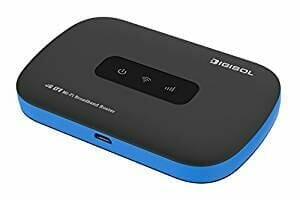 The 7 Best Wireless Travel Routers of 2020
The 7 Best Wireless Travel Routers of 2020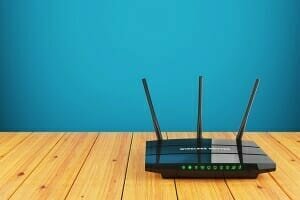 The 7 Best Routers Of 2020 for Under $50
The 7 Best Routers Of 2020 for Under $50 The 7 Best Asus Routers Of 2020
The 7 Best Asus Routers Of 2020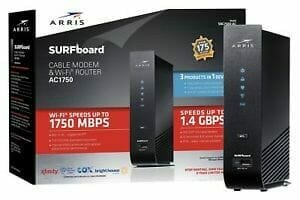 The 7 Best Cable Router/Modem Combos of 2020
The 7 Best Cable Router/Modem Combos of 2020